Keeping Your Dog Safe in the Heat: A No-Nonsense Guide
I’ve spent years working with all kinds of dogs in every imaginable weather condition—from the scorching, dry heat of the desert to the soupy, thick humidity of the coast. And if there’s one thing I’ve learned, it’s that heatstroke in dogs is incredibly fast, terrifyingly dangerous, and almost always preventable.
In this article
So many people think a bowl of water and a shady spot are enough. And on a mild day, maybe they are. But when the temperatures really start to climb, you need a game plan. This isn’t about being paranoid; it’s about being smart and understanding how your dog’s body is fundamentally different from yours. You need to know the first quiet signs of trouble and exactly what to do when things get serious. This guide is all about the practical, field-tested stuff you need to know to keep your best friend safe all summer.
Why Dogs Overheat So Easily
First off, let’s get one thing straight: dogs and humans cool down in completely different ways. We’re covered in sweat glands. When we get hot, we sweat, and the evaporation cools us off. Dogs can’t do that. They have a few sweat glands in their paws, but honestly, they don’t do much. Their main cooling tool is panting.
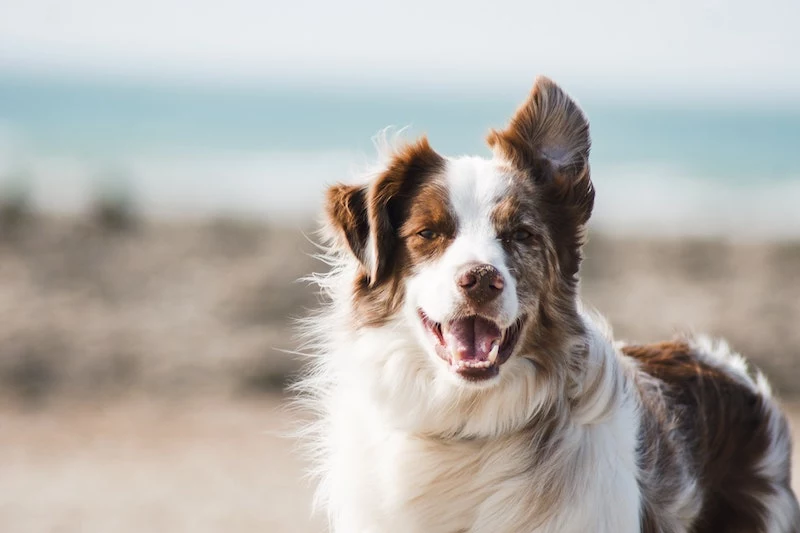
Panting is basically a high-speed air conditioner. A dog takes rapid, shallow breaths, which pulls air over the wet surfaces of their tongue and lungs. As that moisture evaporates, it pulls heat away. It’s a pretty clever system, but it has a couple of major flaws.
For one, it doesn’t work well in high humidity. Think about it—for evaporation to happen, the air needs to be able to absorb moisture. When the air is already thick and wet, panting becomes way less effective. I’ve seen more dogs get into serious trouble on an 85°F (29°C) day with 90% humidity than on a 95°F (35°C) day with low humidity. That’s a huge deal to remember.
And then there are the breeds with flat faces, like Pugs, Bulldogs, and Frenchies. Their short snouts mean their airways are naturally compromised. They just can’t move enough air to cool themselves down properly, putting them at an extremely high risk. But heads up, it’s not just them. Other factors that increase risk include age (puppies and senior dogs can’t regulate their temperature as well), being overweight (that extra layer acts as insulation), or having underlying health issues like heart or lung conditions.

What About Their Fur Coat?
A common myth is that you should shave a double-coated dog like a Husky or Golden Retriever for the summer. Please don’t do this! That double coat is actually a brilliant piece of natural engineering. The dense undercoat is designed to trap a layer of air, insulating them from both the cold in winter and the heat in summer. The outer guard hairs even help reflect sunlight.
Shaving them removes that entire system and exposes their sensitive skin to the sun, leading to a risk of sunburn and overheating. A much better strategy is to make sure their undercoat is thoroughly brushed out to remove all the dead, shed fur. This allows for much better air circulation. A professional groomer can do a “summer blowout” for about $50-$80, and in my opinion, it’s worth every penny.
The Two Stages of Heat Stress: What to Look For
Heatstroke doesn’t just happen out of nowhere. It builds in stages. The absolute most important skill you can have is spotting the earliest signs. I’ll never forget a training exercise where a super-fit, lean Malinois went from looking a little winded to staggering in less than 10 minutes. That’s how fast this happens, and it’s why you can’t afford to wait.
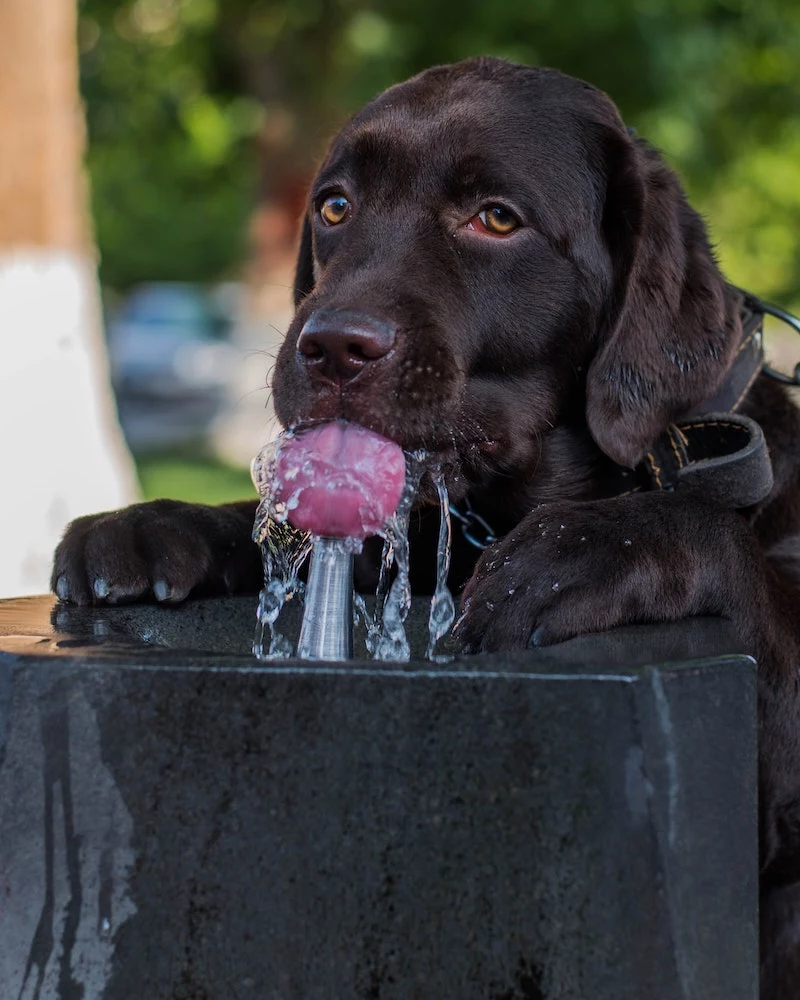
A dog’s normal temperature is around 101-102.5°F (38.3-39.2°C). Trouble starts when it climbs over 104°F (40°C).
Stage 1: Heat Exhaustion (The Big Warning Sign)
This is your chance to intervene before it becomes an emergency. If you see these signs, stop all activity, get your dog inside, and start cooling them down immediately.
- Heavy, frantic panting that seems way over the top for what they were doing.
- Thick, ropey drool.
- Their tongue looks unusually wide and flat.
- They seem a little sluggish or don’t want to move anymore.
- They might seem anxious or restless.
Stage 2: Heatstroke (This is a Medical EMERGENCY)
At this point, the body is failing. The core temperature is soaring, and organ damage is a real and immediate threat. This requires instant first aid and a trip to the emergency vet, even if your dog seems to get better.
- Gums that are bright red, pale, or even bluish.
- Dizziness or stumbling. They might look “drunk.”
- Vomiting or diarrhea, which can sometimes have blood in it.
- Obvious confusion or disorientation.
- Collapse or losing consciousness.
- Seizures.

Smart Ways to Keep Your Dog Cool
The best defense is a good offense. It’s all about managing your dog’s activity and environment before there’s even a hint of a problem.
Smart Hydration
Just leaving a water bowl out isn’t always enough. Some dogs just don’t drink enough on their own. Quick tip: add a tiny splash of low-sodium chicken or beef broth to their water bowl. It makes it way more enticing. For very active dogs, you can look for canine-specific electrolyte powders like K9 Power or Petralyte, which you can find online or at pet supply stores.
My Go-To ‘Pupsicle’ Recipe
This is the easiest trick in the book. Just grab some low-sodium beef or chicken broth, pour it into an ice cube tray, and freeze it. That’s it! They’re a perfect, hydrating, and cooling treat for a hot afternoon.
Watch Out for Hot Surfaces
Asphalt and concrete get dangerously hot. Use the five-second rule: place the back of your hand on the pavement. If you can’t hold it there for five seconds, it’s too hot for your dog’s paws. I’ve seen some nasty paw pad blisters from just a few minutes on hot pavement. Stick to grass or dirt paths. In a heatwave, this means you absolutely have to change your walking schedule to early morning or late evening, long after the ground has cooled.
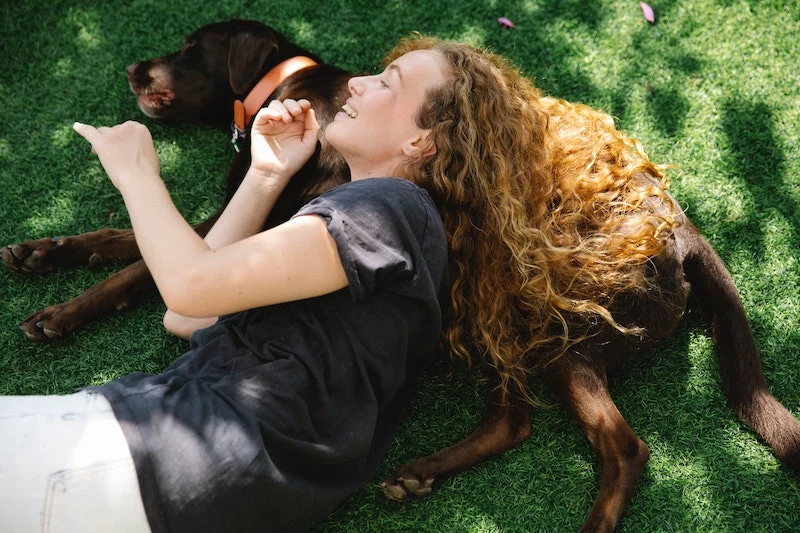
Cooling Gear That Actually Works
The market is flooded with cooling products. Some are fantastic, and some are a waste of money. Here’s the real-world breakdown of what I’ve seen work.
Cooling Mats: These are generally filled with a pressure-activated gel that pulls heat away from your dog’s body. They’re great for using indoors on the floor for your dog to lie on after a walk. Expect to pay between $20 and $50, depending on the size. The limitation? They can get saturated with heat and need time to “recharge” in a cooler spot. Don’t leave one in the sun, or it’ll become a heating pad.
Cooling Vests: Let’s talk cooling vests, because the two main types are for totally different situations, and using the wrong one can make things worse.
- Evaporative Vests: You soak these in cool water, and as the water evaporates, it cools your dog. These are fantastic for dry climates with low humidity. They’re lightweight and relatively inexpensive, usually around $30-$60. The big catch? In a humid climate, the water can’t evaporate, so it just becomes a warm, wet blanket that traps heat.
- Phase-Change Vests: These use special inserts that you freeze solid. They provide direct cooling to the dog’s body and are your secret weapon for humid climates where evaporation fails. The downsides are that they’re heavier, the cooling effect only lasts for an hour or two, and they are pricier, often running from $80 to $150.
A Kiddie Pool: Honestly, one of the best and cheapest investments you can make. You can grab one for $15-$20 at a big-box store. You only need a few inches of water—enough for them to stand in and splash their belly and paws. This cools the large blood vessels in those areas and is super effective. As always, supervise them around water.

Emergency First Aid for Heatstroke
Okay, let’s say the worst happens. What you do in the first five minutes is critical. A calm, correct response can be the difference between life and death.
First and most importantly: DO NOT use ice or ice-cold water. I know it’s tempting, but the extreme cold causes the blood vessels on the surface to clamp down, which traps heat in the body’s core and can make internal damage even worse. It can also send the dog into shock. Always, always use cool or room-temperature water.
Step-by-Step First Aid
- Get to a Cool Spot: Immediately move your dog out of the sun. Get them indoors into air conditioning or at least into deep, cool shade.
- Apply Cool Water: Use a hose, a shower, or just wet towels to soak their body with cool (not freezing!) water. Focus on their paws, belly, and inner thighs.
- Get Air Moving: If you can, point a fan at your wet dog. The combination of water and moving air is the most effective way to lower their body temperature.
- Offer Water: Offer small sips of cool water, but don’t force them to drink. They could inhale it.
- Call Your Vet Immediately: This is non-negotiable. While you are doing the above steps, someone should be on the phone with your vet or the nearest emergency clinic. Every dog that suffers heatstroke needs to be checked by a professional for dehydration and hidden organ damage.
Good to know: What if you don’t have a thermometer? A vet will tell you to stop cooling once the dog’s temp reaches 103°F (39.4°C) to prevent it from dropping too low. If you’re at home in a panic without one, don’t worry. Actively cool your dog with water and a fan for about 10 minutes, then stop the active cooling, wrap them in a light towel, and get straight to the vet. This prevents you from accidentally making them too cold while ensuring you’ve started the life-saving process.
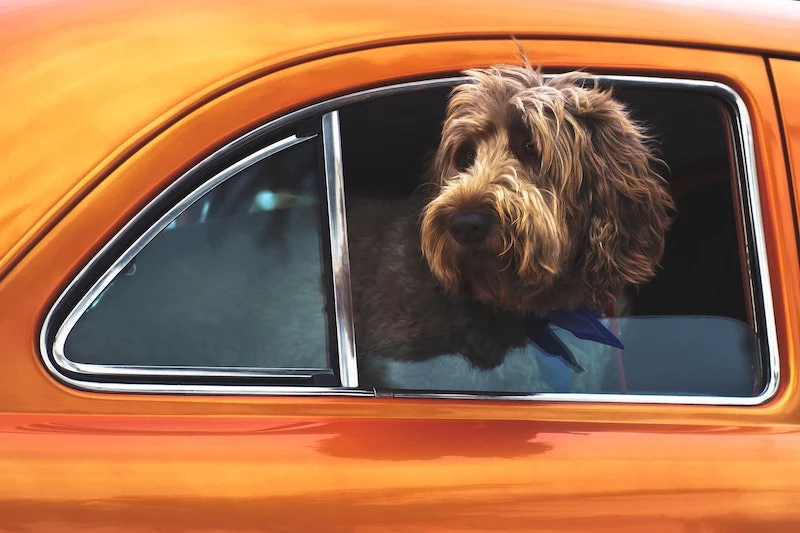
The Bottom Line
There are a couple of things that are simply not up for debate. The first is to NEVER, EVER leave a dog in a car. Not for a minute. Not with the windows cracked. On a 75°F day, the inside of a car can hit 100°F in 10 minutes. It’s a death trap, plain and simple.
Finally, remember to pack a little “go-bag” for summer outings. It’s simple but can make all the difference.
Summer Doggy Go-Bag
- A collapsible water bowl
- An extra bottle of water (more than you think you’ll need)
- A small towel you can wet down for cooling
- Your vet’s emergency phone number saved in your phone
This guide is here to help you make smart choices, but it’s no substitute for professional veterinary care. When in doubt, always call your vet. They know your dog and can give you the best advice. Stay aware, stay prepared, and have a great—and safe—summer with your dog.
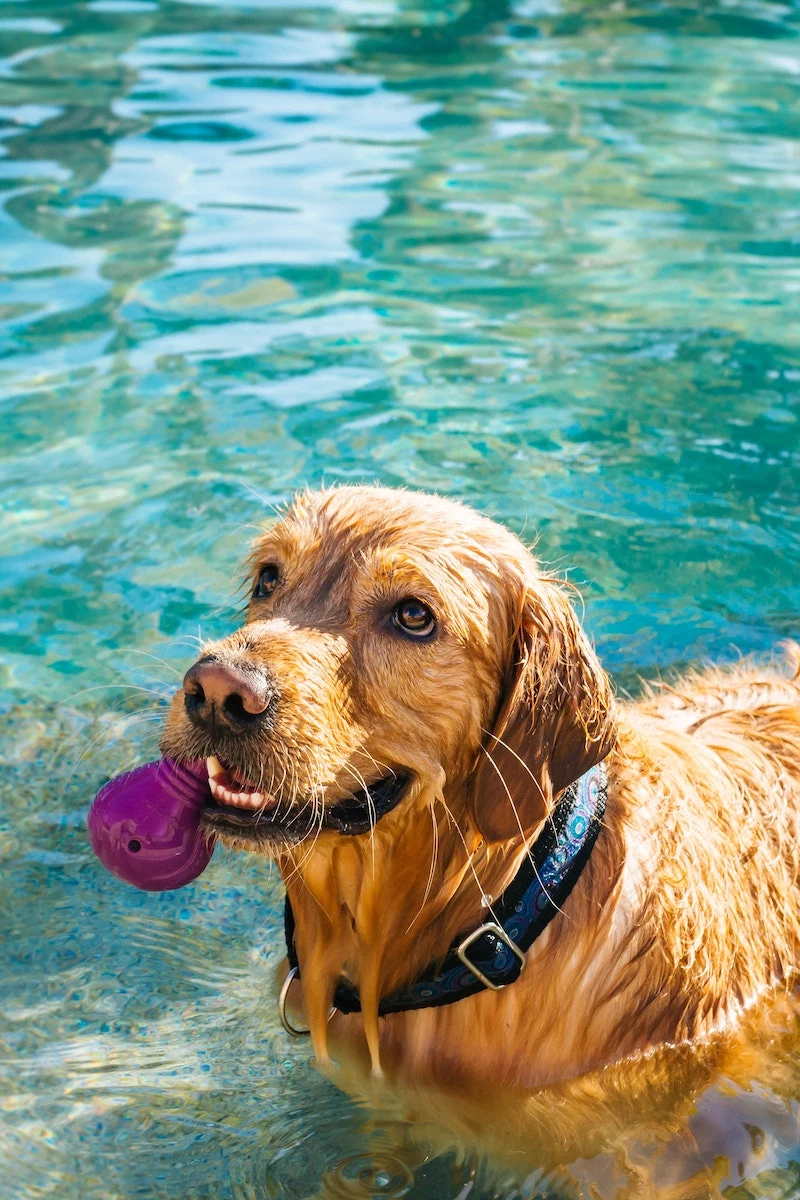
Inspirational Gallery


Can I really give my overheated dog ice water?
It’s a common debate you’ll see online. The fear is that ice-cold water can cause dangerous stomach spasms or bloat. While this is largely a myth for a moderately hot dog, you should avoid giving large amounts of ice or ice water to a dog showing signs of severe heatstroke, as it can cause shock. A much safer and more enjoyable alternative for prevention on a hot day is making ‘pupsicles.’ Try freezing low-sodium chicken broth or a mixture of plain yogurt and mashed banana inside a KONG Classic toy. It’s a treat that cools them down slowly and keeps them busy in the shade.
A dog’s normal body temperature is 101° to 102.5°F (38.3° to 39.2°C). A body temperature of 106°F (41°C) or higher can be fatal.
That narrow margin is why proactive cooling aids are so critical. Beyond shade and water, consider investing in gear specifically designed to lower your dog’s body temperature. Cooling mats, like the gel-filled ones from The Green Pet Shop, are pressure-activated and provide a constantly cool surface indoors without electricity. For active dogs, an evaporative cooling vest, such as the Ruffwear Swamp Cooler, uses the power of water evaporation to pull heat away from the dog’s core during walks.










